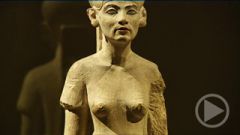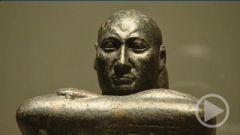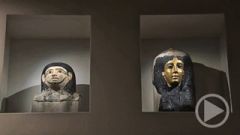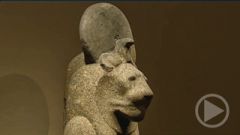- Home
- »
- Germany
- »
- Berlin
- »
- Museum Island
- »
- The Berlin Egyptian Museum
- »
- The Berlin Egyptian Museum - The Green Head
The Green Head
Green Head
Together with the portrait heads of Nefertiti and her mother-in-law Tiy, the Green Head is one of the most famous art works in the Egyptian Museum in Berlin. If it were not here in the context of ancient Egyptian art, it would be difficult to place it in a particular epoch or region of world art history. Only the dorsal pillar, of which the upper end at the nape of the neck has survived, provides a clear indication of the Egyptian provenance of this extraordinary work in grey-green siltstone.
The shaven head – indicating a dignitary of priestly rank – is finely modelled to show the irregularities and extreme asymmetries of the skull. The face is asymmetrical too, both in the unequal breadth of its two halves and in the detail of the lines at the corner of the eyes, at the bridge of the nose between the eyebrows, on the upper lip, on the cheeks, in front of the ears, and very obviously in the case of the deep furrows that run from nose to mouth. The expression of alert attention is intensified by the tension between the smooth surface of the skin and the skull that is revealed underneat
The high quality of this sculpture puts it outside the rules of artistic evolution and makes it an avant-garde masterpiece beyond all normality. And here lies the reason for the endless and continuing debate among experts as to the dating of the head.
The view of classical archaeology is that this portrait is a product of the encounter of ancient Egyptian and Greek art. The argument against this is that Egyptian art has been producing extraordinary individual portraits since the days of the Old Kingdom. Clear evidence of that fact is provided by the Head of Ka-hotep, which is two thousand years older. Current research in the field of art history dates the Green Head to around 400 B.C., during the last independent ancient Egyptian dynasty before Egypt became part of the Hellenistic world after it was conquered by Alexander the Great in 330 B.C.










